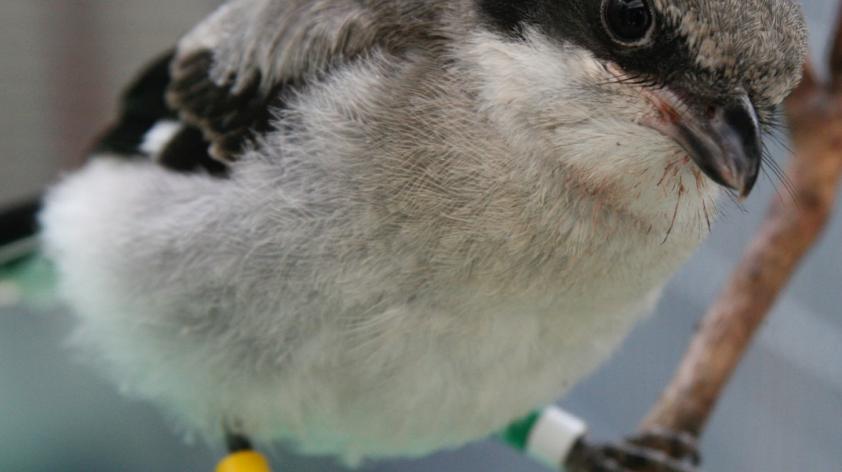
Not Your Average Saturday Morning
I wake up to another delightful, brisk Saturday morning on San Clemente Island, head down Ridge Road to Stone Station, making sure to avoid any scurrying foxes, and get the day started. My morning routine starts with cleaning out the dead mealworms for the San Clemente Loggerheaded Shrike’s diets. Unaware of their impending doom, the living mealworms squirm around their fallen comrades trying to avoid the tweezers used to pick out the dead.
After the rest of the shrike diet is prepared (which consists of a few pieces of water soaked cat food, 15g of carnivore diet, live crickets, mealworms, a frozen lizard, and a live mouse), we figure out who is going to feed which set of cages. Saturdays are usually a three-man crew, so two people will head out to the Arizone Road cages and one person will head over the hill to the Burns canyon cages. Once this has been decided the unusual morning really begins, because Saturday is dead mouse day.
Once a week we go to each cage to find and remove all of the cached (how the shrikes impale their food on branches for easier eating and storing) lizard and dead mouse bodies to accurately monitor consumption. Sometimes the mice are cached and barely touched, and sometimes all I can find are entrails hanging from a branch like a morbid, Tim Burton-esque Christmas wreath.
A couple of our shrikes have a number of bodies hanging in their cages, like King Louie (SB# 2558) and Becky (SB# 1856). Becky sometimes leaves a body part of every single mouse she’s been fed that week on her perching! Like Becky, most of the shrikes tend to “decorate” their cages to their liking with various bodies.
Once we’ve gone through each of the sixty-two cages and collected all of the sad, little bodies we head back to Stone Station, where we go through each returned food pan and record which shrikes left which bodies and how much remain of each.
Though disentangling mouse entrails from perching is not something I want to be doing first thing on a Saturday morning, the live mice are a crucial part of our captive breeding program here on SCI. They allow us to provide as much of a natural foraging experience to the shrikes as possible, which is immensely important because they are all candidates for release into the wild. As always we are thankful to our volunteers from the San Diego Zoo who help us by picking up our weekly live mouse order and deliver them to the air terminal on Naval Base Coronado North Island every week.













